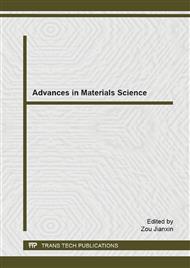p.644
p.648
p.652
p.656
p.660
p.664
p.669
p.672
p.676
Post-Fire Study of Strength and Stiffness of a Wooden Roof Structure
Abstract:
The characteristics of the behavior of building materials against the fire could realize a preponderant role in the result of an eventual burning situation, difficulting or contributing to reach a critical stage. The present study evaluated the mechanical properties in compression parallel to grain of five pieces of wood from the roof structure of a residence undergo the fire in the rural area of Itapeva/SP. The roof structure was built 25 years ago using wooden beams of the species Guarucaia (Peltophorum vogelianum), where the specimens were obtained. The objective of this work was to realize a case study about strength and stiffness in parallel compression to wood grain in a roof structure of a house located in Itapeva/SP, according to its level of thermal degradation, upon the occurrence of a real fire. In general, despite the many variables involved, the results based on woods of a real fire shown are consistent with the fire simulations provided by the literature.
Info:
Periodical:
Pages:
660-663
Citation:
Online since:
February 2015
Keywords:
Price:
Сopyright:
© 2015 Trans Tech Publications Ltd. All Rights Reserved
Share:
Citation:


